Your Assignment: Read Robert Scott in the Anthology (pp. 108 - 118)
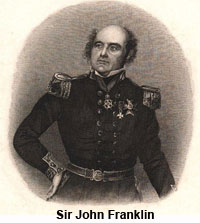 A Brief History of Arctic Exploration
A Brief History of Arctic Exploration
1845
Sir John Franklin (British)
In 1845 Franklin launches a British expedition with the intention of finding the fabled Northwest Passage.
Franklin disappears.
1850
Clements Markham (British)
Several expeditions are sent to rescue Franklin but none are successful. On one of those unsuccessful attempts is 20-year old Clements Markham. In time, Markham will become head of the Royal Geographic Society and play an important role in sending expeditions to Antarctica

1893 - 1896
Fridtjof Nansen (Norway)
Missionary Generation (1861 – 1930)
- In 1893 Nansen sails to the Russian Arctic on the ship named the Fram.
- He allows the ship to freeze in the ice
- The ship drifts to the north, remaining frozen in the ice pack.
- During the second summer, while still trapped in the ice pack, the ship begins veering away from the North Pole. Nansen leaves the ship and using sleds, makes it to just over 86 degrees north (actual: 86°14’ N. lat., 268 miles from pole).
1898
Roald Amundsen (Norway) Missionary Generation (1872 – 1922)
AND Fredrick Cook (US) Missionary Generation (1865 - 1940)
- In 1898 Amundsen & Cook are shipmates on a Belgian vessel.
- The ship becomes trapped in the ice. They become the first to experience an Antarctic winter.
1903
Robert Falcon Scott (British) Missionary Generation (1868-1912)
AND Edward Wilson (British) Missionary Generation (1872-1912)
AND Ernest Shackleton (British) Missionary Generation (1874-1922)
In 1903, the first British expedition with the goal to reach the South Pole is organized and under Robert Falcon Scott's command they reach 82 degrees south (Actual: 82°16' S lat., about 530 miles from the pole).
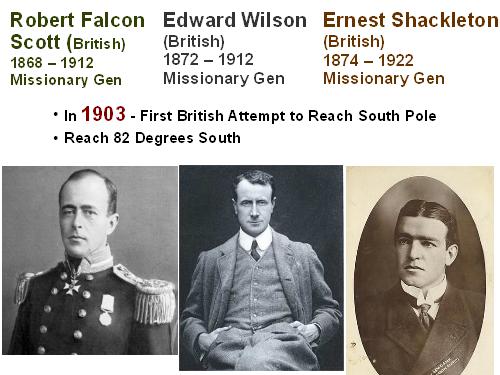
1904 - 1906
Roald Amundsen (Norway) Missionary Generation (1872 – 1922)
From 1904 to 1906, Roald Amundsen successfully traverses the all-water route through the Northwest Passage.
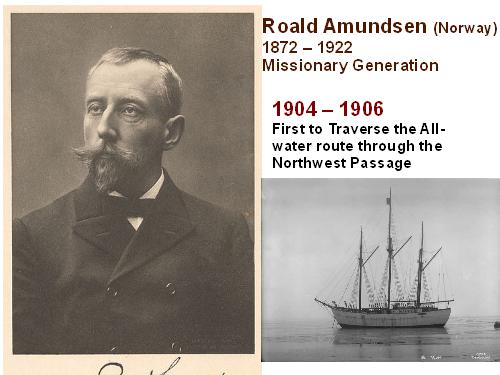
1908
Fredrick Cook (US) Missionary Generation (1865 – 1940)
Cook claims to have reached the North Pole in 19o8. His claim is later discredited.
1909
Robert Peary (US) Progressive Generation (1856 – 1920)
Peary claims to have reached the North Pole in 1909. His claim was accepted, but many years later, it was discredited.
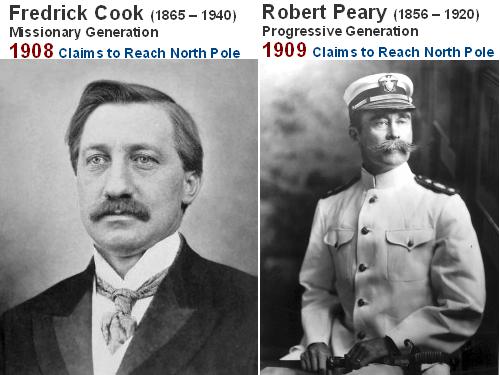
1909
Ernest Shackleton (British) Missionary Generation (1874-1922)
In 1909, Shackleton's leads the second British attempt to reach South Pole.
His party reaches slightly more than 88 degrees south (Actual: 88°23' S. lat., 112 miles from the pole).
1910 - 1912
Robert Falcon Scott (British) Missionary Generation (1868-1912)
Roald Amundsen (Norway) Missionary Generation (1872 – 1922)
Robert Scott organizes and leads the third British expedition to Antarctica.
While Scott is sailing south to start his expedition, it is his understanding that Roald Amundsen is embarking on an expedition to the North Pole. Amundsen, however, has made a change in plans. Because Cook (or Peary) has already reached the North Pole (it isn't until later that both claims are discredited), he decides to turn his ship, the Fram, to the south and make an attempt on the South Pole.
On the way to Antarctica, Scott stops in Australia and receives the following telegram:
BEG TO INFORM YOU FRAM PROCEEDING ANTARCTIC - AMUNDSEN
The stage is set for a race to the South Pole pitting the Scott's British team against Amundsen's Norwegians.
The following map shows Scott's and Amundsen's routes to the South Pole:
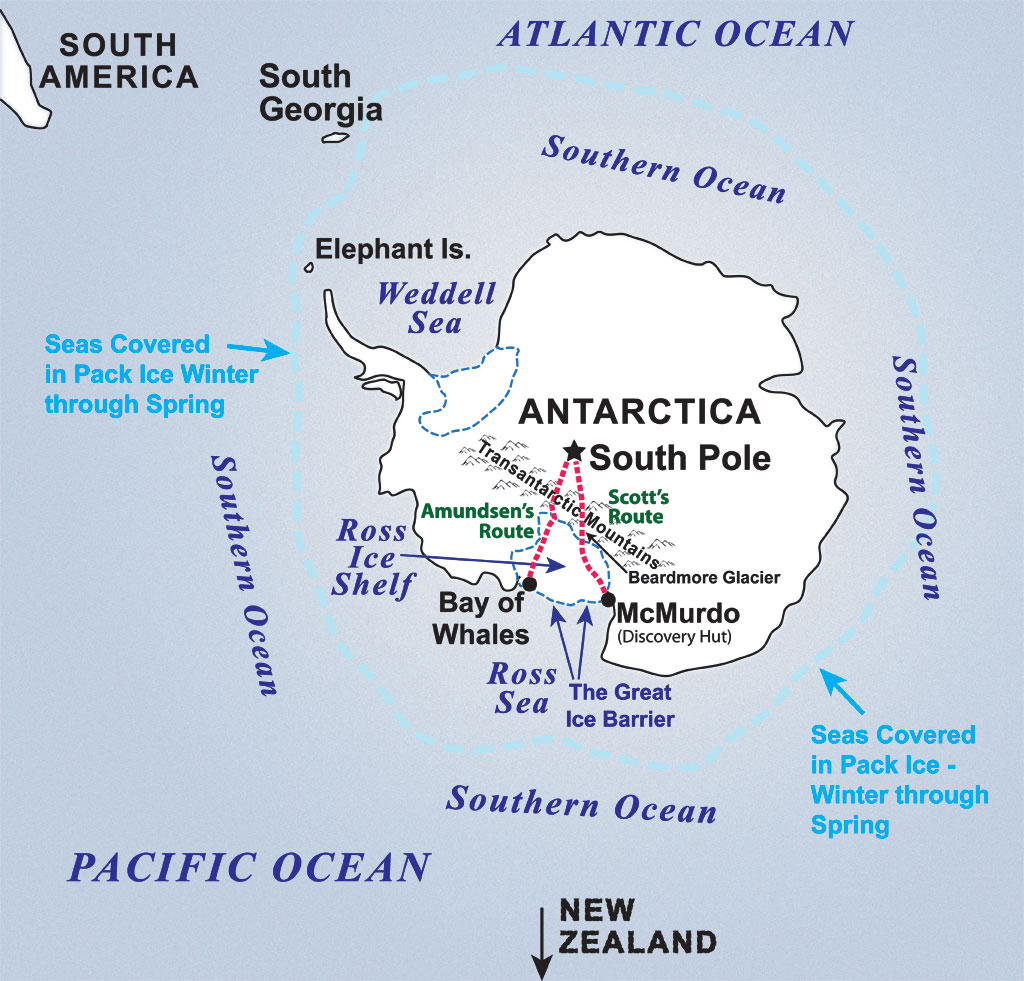
Amundsen turns out to be the winner, reaching the South Pole a month before Scott. His party returns safely. Scott's party, however, perishes on the return journey.
Your reading in the Anthology comes from Scott's journal in which describes the last few days of that journey.
The following are the members of Scott's polar party:
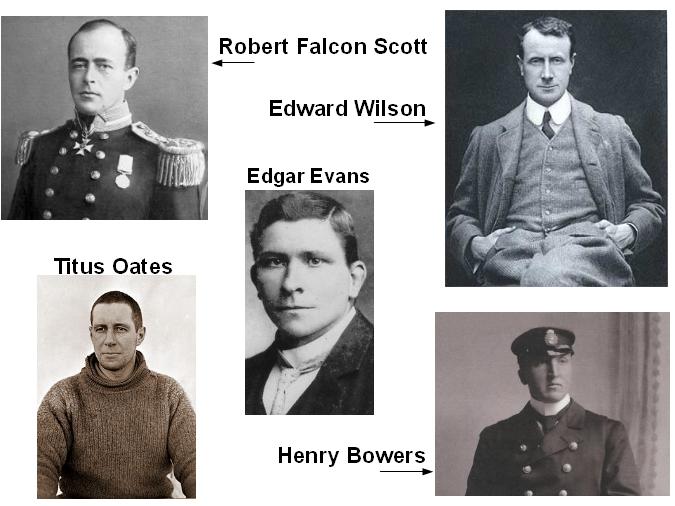
Scott's party on the journey:
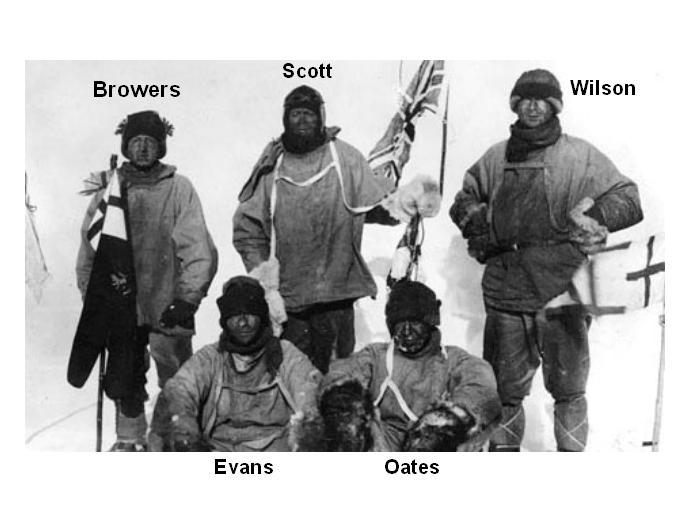
The following map shows the location of supply caches (depots) where Scott's party has left food, fuel and supplies for the return journey:

Scott's last entry in his journal . . .
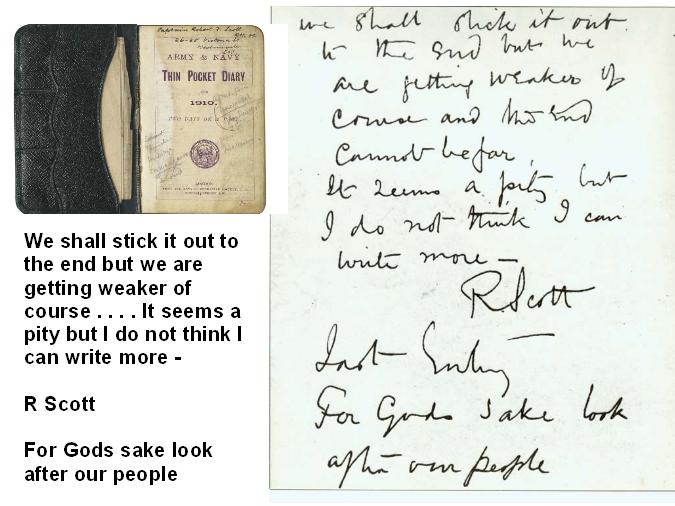
1914 - 1916
Ernest Shackleton (British) Missionary Generation (1874-1922)
In 1914 Shackleton leads an Expedition to traverse Antarctica. His ship (the Endurance) becomes trapped and crushed. More on this expedition in our next reading.
1921-1922
Ernest Shackleton (British) Missionary Generation (1874-1922)
In 1921 Shackleton begins another Antarctic expedition and dies en route of heart failure. He is buried at South Georgia Island
1926
Admiral Richard Byrd (US) Lost Generation (1888- 1957)
1926 Byrd announces that he has flown over the North Pole, but his claim is later discredited.
1926
Roald Amundsen (Norway) Missionary Generation (1872 – 1922)
Umberto Nobile (Italian) Lost Generation (1884-1978)
In 1926, three days after Byrd's claim, Amundsen flies over in a dirigible. The dirigible is piloted by Umberto Nobile. Although he didn't actually travel across the ice to get there, it is, nevertheless, another towering achievement for Amundsen. He becomes the first not only to reach the South Pole, but the North Pole as well.
1928
Roald Amundsen (Norway) Missionary Generation (1872 – 1922)
Umberto Nobile (Italian) Lost Generation (1884-1978)
In 1928 Nobile turns up missing while on another expedition in the Arctic. Amundsen searches for him. The search plane goes down and Amundsen is lost
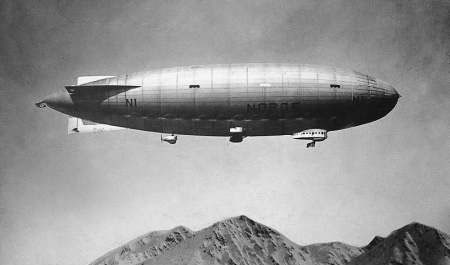
[End]
